Iceland: How much things cost & how to visit on a low budget
Since its currency crash in 2008, Iceland had gone from absurdly expensive to somewhat reasonable in cost, and that has prompted thousands of new tourists to stream in to see what all the fuss is about. It’s hard to find a visitor to Iceland who didn’t absolutely love the place, but you won’t find anyone who tells you it’s cheap, so planning ahead is essential. Prices have continued to creep up in 2015 and 2016, so it’s again among the most expensive European destinations.
Many visitors arrive on an Iceland stopover going between North America and Europe, but with very cheap flights to and from Europe it’s becoming popular for adventurous types from all over the continent. In 2013 I spent 9 days in the country, always checking for prices and the cheapest ways of doing things, so below I can lay out how to budget and what to do to keep costs down.
Note: This article was first written in late 2013, but all prices have been updated as of December 2016 to be current through 2017.
Reykjavik vs. the rest of Iceland: Where to go
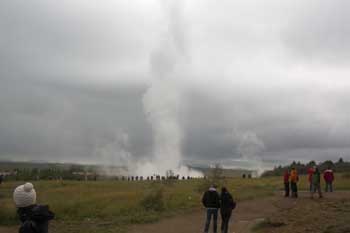
If you have one night or a few nights you are better off taking a bus or renting a car directly from the airport and heading east along the southern coast for some of the country’s best sights. If you have at least a week you’ll want to rent a car and do a lap around Iceland’s famous Ring Road, allowing you to see nearly everything the country has to offer in a neat and organized way.
Iceland accommodation: Hostels, guesthouses, and hotels
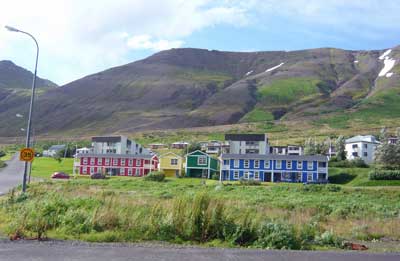
The most common form of accommodation in Iceland is a guesthouse and hostel combination which will have a mix of private rooms and dorm rooms, with shared bathrooms in down the hall. Most of them have fully equipped shared kitchens, so self-catering is at least as popular as eating out while exploring Iceland outside of Reykjavik.
High season (June through August) typical accommodation prices
All prices quoted in US dollars at a rate of about 110 Krona to US$1 in December, 2016.
- Hostel dorm bed: US$34 to US$58
- Single private with shared bathroom: US$85 to US$135
- Double private with shared bathroom: US$118 to US$140
- Double private with en-suite: US$130 to US$320 (and up)
Prices in Reykjavik are a bit higher than elsewhere in the country, but not by much. Prices in the off season are about 30% lower than in high season, but in the slowest months many places close so rates never go much lower than this.
Most Iceland guesthouses are NOT on the normal hotel-booking sites
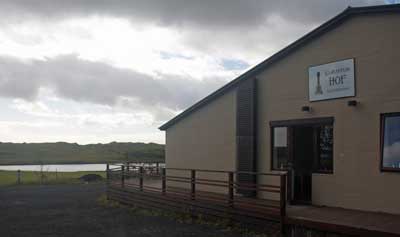
The good news is that when you get to Iceland, the tourism office will give you a directory of almost every guesthouse on the island, and there are other ways of finding these guesthouses and other informal accommodations. Even as of late 2016 you should be able to book a double room (with shared bathroom) for about US$120 per night in most towns in Iceland. If you do a hotel search you might see prices that are double that, but those are in the few formal hotels with 24-hour lobbies and such.
Increasingly, Airbnb and other online rental sites are the best place to find guesthouse accommodation in Iceland. As of only a few years ago, most places would be booked by phone or in person on arrival day, but now more and more places can be pre-booked, at reasonable prices.
Sleeping bag accommodation in Iceland
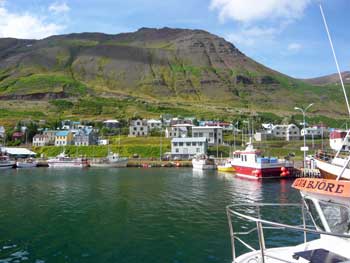
In a ‘sleeping bag accommodation’ (as it’s known in Iceland) you’ll get a bed with a mattress and often a pillow. So with even a cheap indoor sleeping bag, you’ll be comfortable and warm while saving quite a bit of money. For those renting cars, this is a highly recommended strategy.
You can rent sleeping bags in Reykjavik starting at around €12 per week.
Most Iceland attractions are free (the good news)
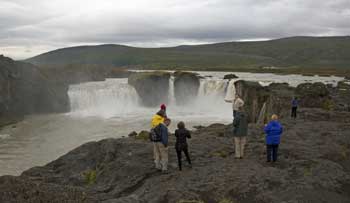
So to see all the glaciers and waterfalls and volcanic beds and other scenic attractions, it’s all free of charge with no admission cost or even parking fees. The larger attractions also have visitor centers where you can get local advice for free as well.
Iceland transportation: Rental cars and buses
Even as a lifetime public transportation fan, I’m very glad I gave in and rented a car to tour Iceland, even as a solo traveler. For the most part the roads are in perfect condition and virtually empty even in high season, so driving couldn’t be easier. Also, the country has stunning vistas every time you turn a corner, so being able to stop in the middle of the road even if there is no room to pullover, is critical.
The buses are modern but also expensive and running on very limited schedules. If you only have enough time to cover the main sights along the southern coast you might buy one of the bus passports that allows you to hop on and hop off, though a rental car is still much better and easier.
Rental cars in Iceland: What you need to know
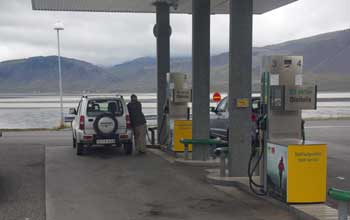
For an extra fee you can pay to reduce that deductible to almost nothing, but the more popular add-on is the Gravel and Glass insurance. For around €10 per day with this coverage you have a zero deductible if the vehicle gets damaged by gravel or if any glass gets broken by flying rocks (or anything else). Unfortunately, many of Iceland’s side roads and even a few of the main roads are covered in gravel, and if you drive at anything above a crawl, there will be some gravel flying around.
Personally, I normally decline add-ons like this but in this case I bought the Gravel coverage after reading a few horror stories in online reviews. I didn’t get any damage that I’m aware of, but the peace of mind was worth a LOT when driving on isolated gravel roads so I wasn’t petrified that I was chewing up the paint job just trying to stay safe on the roads.
Rental cars in Iceland
- 2-wheel drive compact (manual): US$230 per week and up plus add-ons
- 2-wheel drive compact (automatic): US$270 per week and up plus add-ons
- 2-wheel drive mid-size: US$450 per week and up plus add-ons
- 4-wheel drive van or SUV (automatic): US$650 per week and up plus add-ons
Daily rates are about 20% as much as weekly rates, so 5, 6, or 7 days cost the same.
Add-ons
Gravel coverage: US$10/day
GPS (highly recommended): US$10/day
Additional collision waiver: US$10/day
Fuel prices in Iceland
Every gas station in the country has the same prices, which don’t seem to change much. As of December 2016, a liter of petrol is 194 Krona, which is about US$1.75 or €1.63, or about US$7.50 per gallon.
Bus pass prices in Iceland
For a quick day trip from the airport to some local sights you can spend as little as US$90 per person, but for the longer distance buses you’ll spend at least US$130 to US$250 depending on length of time in order to hop on and hop off.
A Ring Road passport will cost around US$400 per person, so for two people it’s no cheaper than renting a car, even after fuel is taken into account, and for 3 or 4 people it’s definitely cheaper renting a car.
Food prices in Iceland
Here’s the thing: sit-down restaurants in Iceland are very expensive by international standards, so there aren’t very many of them. Obviously Reykjavik has many restaurant choices but most smaller towns might have only a few at most. The good news for budget travelers is that fast-food options are more plentiful, and self-catering is even cheaper and easier.
Restaurant prices in Iceland
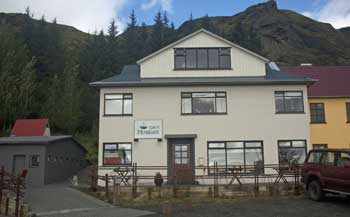
A soft drink, coffee, tea, or even bottled water will generally be between US$3 and US$5 in a restaurant. A pint of beer will typically start at around US$7 at even the cheapest places, while wine and spirits cost even more.
Fast food prices in Iceland
In Reykjavik and larger towns (which might only have 2,000 residents) you’ll have many fast food options including Subway, Quiznos, and usually a few local burger or hot dog places. Prices for a sandwich at Subway are about US$6 for a 6-inch and US$10 for a foot-long, so they aren’t too much higher than elsewhere in Europe, and are sure cheaper than proper restaurants.
More good news for drivers is that many gas stations around the country have fast food restaurants built in, so it’s fast and easy to pick up a sandwich or hot dog by the side of the road.
Hotel breakfast prices in Iceland
Many hotels and guesthouses in Iceland serve breakfast, but it’s almost always at an extra fee, and many don’t serve anything at all. If a breakfast is offered it will typically cost between US$12 and US$15 for a buffet of cereals, bread, cold cuts, cheeses, hard boiled eggs, juices, coffee and tea, and perhaps some pastries.
Making your own self-catering breakfast will be cheaper, but since you can stuff yourself for a flat fee at the breakfast buffets it might be worth it to save yourself the hassle of shopping the day before and making breakfast in the morning.
Self-catering in Iceland
The best budget tip for Iceland is to buy and prepare your own food, and you can literally do it for all three meals per day if you prefer. Since Iceland has almost no national “must-try” dishes, you can buy and prepare your own food without worry about missing anything meaningful.
Nearly every guesthouse in Iceland has a shared kitchen where at least half the guests will be storing and preparing breakfasts and even dinners. They have refrigerators, coffee makers, electric kettles, pots, pans, dishes, and silverware, as well as salt and other spices, so you can buy just the food and you’ll be able to prepare it all.
Supermarket prices in Iceland
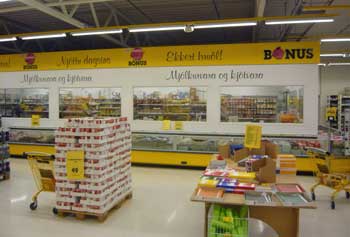
For example, you can buy a 400 gram (1 pound) block of Havarti cheese for around US$5, but a similar looking cheese right next to it on the shelf might be US$15 for the same amount. The same is true for lunch meats. Sliced ham can be US$3 for enough to make 2 sandwiches, but sliced roast beef might be US$10 for the same amount.
Some sample prices in the cheaper Iceland supermarkets
- Sliced white bread: US$1.70 per large loaf
- Fresh baguette: US$1.50 to US$2 each
- Hot dog buns: US$2.50 for 5
- Pork hot dogs: US$3.50 for 5 large hot dogs
- Cheap Havarti or other local cheese: US$5 for 400 grams (1 pound)
- Imported cheese: US$10 to 15 for 400 grams (1 pound)
- Sliced ham for sandwiches: US$5 for 400 grams (1 pound)
- Sliced roast beef for sandwiches: US$12 for 400 grams (1 pound)
- Pasta: US$1.50 for .5 kilogram (1.1 pounds)
- Pasta sauce: US$3 for a .5 liter jar
- Ground beef: US$5 for .25 kilos (half pound)
- Bake-at-home pizza: US$5 to US$7 for one person
- Bag of tortilla chips for 2 or 3 people: US$2
- Jar of salsa for those chips: US$3
- Breakfast cereal: US$3 to US$5 per box
The prices above are for many of the cheaper and more common things that budget tourists buy in Iceland. As mentioned above, if you want something exotic and imported, it might cost double or triple what you pay at home, if you can find it at all.
Alcohol prices in Iceland
In restaurants and bars throughout the country you’ll pay at least US$8 for a pint of beer, and at least US$10 for a glass of wine or a simple cocktail. If it’s a fancy place you’ll pay even more, of course.
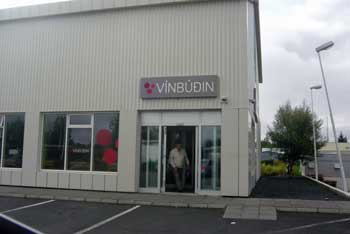
Here are some typical prices for alcohol:
- 330ml can of local beer: US$2 to US$3
- 500ml can of local beer: US$2.50 to US$4
- Cheapest bottle of wine: US$10 to US$12
- .7L bottle of off-brand vodka: US$30
- .7L bottle of mid-level brand vodka: US$50
Bottom line on doing Iceland as cheaply as possible
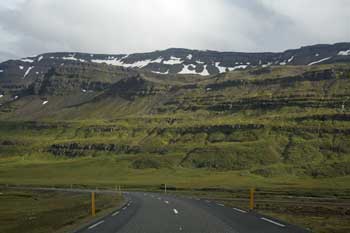
Whether you are going to get dorm beds or private rooms, as long as you will have your own wheels it’s worth renting a sleeping bag. You get the same bed and same services for about US$10 less per night, which will pay for a week’s rental of an indoor sleeping bag.
Unless you are a terrible driver or afraid to drive, it’s highly recommended to rent a car instead of trying to get around using buses. Once you get there you’ll see that having 100% flexibility with a car compared to almost no flexibility with a bus, is worth a LOT.
Instead of trying to be cheap with transportation, be cheap with self catering food and drinks for yourself. If you have at least a small group of people you’ll be able to have a party each evening in or near the shared kitchen of your guesthouse, and it will be more lively than any restaurant in town.

I have been reading up on a few things and as there is only a few hours of day light in November I was thinking of staying in Reykjavik and doing a few nights there with Blue lagoon etc then travelling down to Vik staying there and then maybe a bit further on to another town and staying there. I dont want to be travelling in the night as i will miss all the sights. I could do a few things from Reykjavik Snow mobile, snorkling etc then travel the south coast and back again then stay last night in Reykjavik before flight home.
Great information on Iceland here, I have read every comment and learnt loads. I was thinking of going to Iceland late November for 5 days or even a week. This is the first I have heard about the Ring Road. I was planning on getting a hotel somewhere and doing excursions ever day. No i think I will get a car and do the ring road.
I would like to know how long did it take you to get round the whole Road.
Is there a shorter route that you can do as I would like to go quad biking and horse back riding while i was there. So i was thinking of staying a few days in Reykjavik or similar then getting excursions from there then doing the Ring Road to see the sights.
Thanks
Ben
Ben,
I’m happy this has helped. I went clockwise on the Ring Road leaving from Reykjavik, and I spent an entire week doing it. Actually, I did about 85% of the distance in the first 5 days, and then took my time along the southern coast because there are many sights in that area. As I’m sure I mentioned above, my Ring Road experience is one of my fondest travel experiences of my life, and the whole thing is spectacular and varied the whole way around. You could probably do the whole Ring in about 5 days, but trying to go any faster and you wouldn’t really enjoy it because you’d be driving nearly every daylight hour (actually in November you might have to drive in the dark as well).
Unfortunately, there’s no real short version of the Ring Road because it’s really the one proper paved road around the island, and the interior is mostly dirt roads that require a 4-wheel-drive vehicle to even go on them.
The one shorter alternative that could work would be to drive from Reykjavik along the southern coast to the town of Vik, and then drive back, mostly on the same roads. In my opinion, the scenery closer to Vik is more interesting than that closer to Reykjavik, and the sights are much less crowded as well. You could easily do 3 or 4 nights back and forth, seeing pretty much everything in between. On the other hand, a 7-day car rental might only be a bit more expensive, so the whole ring could be tempting.
And again, the city of Reykjavik itself is kind of a dud that can be appreciated in a day or so. You can take all sorts of trips to the nearby sights from the capital, but I’m among those who thinks going outside that bubble was extremely worthwhile.
Have a great trip, and let me know if I can help further. -Roger
Roger, I have been reading your comments with great interest as you appear to have a good pulse on what not to see in Iceland and which scenery is worth a visit. Thanks for all you do. With that said, I am researching for a trip to Iceland late February 2015. I have multiple questions if you don’t mind taking the time to answer? Pardon the lengthy post, but you appear well-knowledgeable of Iceland.
1) In late February, would I be able to comfortably drive a rental car (2WD) from Reykjavik to Jokulsarlon glacier lagoon? I understand that some parts of Ring Road (Rt 1) is composed of gravel but a 2Wd should be okay. Wanted to confirm that with you.
2) I am more concerned with looking for sleeping bag accommodations along the way that will enable us to cook our own food. What budget friendly websites would you use to book these accommodations in advance? From Reykjavik to Jokulsarlon, I would like to make 1 overnight stop (perhaps in Vik) since we will be doing a lot of photography at waterfalls on the way.
3) Below is a rough draft of my itinerary from Reykjavik to Jokulsarlon (noticeably skipping the Golden Circle per your suggestion). Can you run through this and vouch for the accuracy – mainly to check to see if this plan is doable in 3 days time:
a) Depart Reykjavik in rental car the morning of Feb 23rd – possibly using Sixt Rental agency, with CDW included plus gravel damage coverage. Are you aware of other reputable rental agencies that provide great service and reasonable rates?
b) Our first stop on Rt. 1 may be Mount Hengill, a central volcano with magma chamber. Wondering if this is worth a stop.
c) Hveragerdi – I read that this town has interesting hot springs. Do you know if they are free? I’m not much interested in paying for the Blue Lagoon, as it seems to be overrated based on local opinions.
d) Continue on Rt. 1 to Seljalandsfoss waterfall, consistently rated high by travelers.
e) Stop in town of Skogar to see the Skogafoss waterfall, another top-rated location.
f) Make a stop at Myrdalur to see glaciers? (if scenery is not worth it, will skip this)
g) Next stop would be the village of Vik for the black sand beach. I read that there are shops here for souvenirs/jewelry.
At this point, I may decide to stay overnight in Vik, since it is about 3 hours drive from Reykjavik to Vik (no doubt it would take much longer with all of our stops!) Do you have any recommended sleeping bag accommodations or budget guesthouses near Vik? Next morning continue the journey:
h) Continue down Rt. 1 to Vatnajokull National Park for their ice caves. Would we be able to enter the caves with no guides? I understand that if the water/streams are not frozen, it’s more difficult to enter the caves for photography.
i) Skaftafell Nature reserve – worth a look? I’m hopeful that a 2WD car can reach these places.
j) At last, Jokulsarlon glacier lagoon. We may spend our 2nd day here exploring the area. Then stay overnight in hopes of catching the Northern Lights at the lagoon. Based on research, cloud cover in February is extensive, so it would be hit or miss on seeing the Aurora Borealis. We’re hoping to do as much as we can ourselves, without paying for tour guides.
After the glacier lagoon, we’ll drive back to Reykjavik, making stops along the way. Perhaps head down to the town that charters a boat from Heimaey Island to see the loneliest house in the world (on Elliðaey island). Although that may be a bad idea in February (biting cold from wind).
Thanks for any input that you can give!
Allen,
Always happy to hear that this is helpful, and I’ll try to answer as many of these as I can.
1) Yes, the entire Ring Road and many of the smaller roads leading from it are rated okay for 2WD vehicles. The Jokulsarlon Glacier Lagoon is actually right off one of the busier parts of the highway, and it’s all perfectly paved though the whole south part of the island, which is also the busiest area.
2) Vik would be a good stop on your way toward Hofn. The one problem you might have is that February is obviously the off season in Iceland, and I believe many of the larger hotels are closed for the season. When I went I used kayak.com to check the public hotel listings, but there are also plenty of guesthouses that only seem to book by phone and email, which you’ll find out about in the directory you can get free once you arrive in Iceland. Many of these smaller places offer the sleeping bag accommodation, and my best guess is that you’d be able to find something in every town you went to, or at least in the next town over.
You can get a voice and data SIM card once you get to Iceland, which will work everywhere you’ll be traveling. I’m pretty sure you’ll just need to call or email one or two places in the directory, and you’ll have a room sorted out. It all seems very mysterious until you get there (it sure did for me), but once you arrive I found it pretty easy and relatively stress free to book rooms.
3) It’s hard for me to confidently comment on your itinerary because I think I only went to about half of the places on your list, and I don’t remember them all by name. So I think it’s wise to trust the other online reviews and general opinions that you’ve read. You might also check Lonely Planet’s online content for Iceland, which I used and found to be very reliable.
Most of the main sights are very close to the Ring Road, so it’s easy enough to pull off for a quick look and decide whether it’s worth spending more time there. If a place requires a 4WD vehicle to get there, I’m pretty sure it would be mentioned in the description or the reviews, and most sights are suited to a 2WD vehicle for sure.
As I mentioned, I was quite happy with the service from Sixt Rent a Car, and they were one of the cheapest for the dates I was there. My guess is that as long as you go with a larger agency and factor in the price of the gravel protection for peace of mind, you should do fine with any of them so look for the cheaper ones. Renting cars for Ring Road trips is a big industry in Iceland and if one company built a reputation for ripping people off, I think they would struggle to survive. I was a bit worried by this because it’s easy to find reviews from people who had a bad experience with any of the agencies. But the tens of thousands of happy customers rarely write reviews, so I think it looks much scarier than it really is.
And actually, if you are only going as far as Jokulsarlon glacier lagoon, you’ll be on well-maintained main roads the whole time. The only unpaved parts of the Ring Road are along the east coast, although some of the access roads leading to the waterfalls are also unpaved, so the gravel thing is probably worth getting.
Oh, and the food situation in Iceland is quite unusual because there are very few restaurants outside of the bigger cities. BUT, there are snack bars and fast-food franchises connected to most petrol stations, and those are found in nearly every town along the way. And every guesthouse I stayed in had a shared kitchen for self-catering, which was used by most guests. In other words, the communal kitchen with nearby supermarkets thing seems to be the normal way of eating for most tourists, so you should have no trouble finding places like that.
If you have other questions I can help with, please ask and I’ll give it a shot. -Roger
Dear Allen,
I will be going to Iceland in February 2016 and my initial idea was to do pretty much the same tour as you were suggesting! Could you please forward me your contact (or send an e-mail to [email protected]), I am really curious if you were able to do everything you planned and if so, if you have any tips!
Thanks!
PS. Roger, thank you for the time you took to write down all your experiences and so many useful ideas, I found it one of the best recommendations out there!
Thank you for providing this information. A friend and I are doing the 5 night thing in Iceland and are staying in Reykjavik. I know we are getting a car for one day, but it might be better to do a 2 day rental. We are looking forward to hot pools and Northern Lights.
One question that has come up in our planning is the price of coffee. My friend drinks a lot of coffee and is concerned about what she will be spending.
I’m very excited for this trip and to see what we can see in a short period of time.
Laura,
Yes, I think a 2-day car rental would be much better than one day. As I’ve mentioned before, the main sights near Reykjavik are quite mediocre compared to the sights a bit farther away, and the crowds near the capital are much larger as well. If you can take a day to drive to Vik, and another day driving back, seeing various sights along the way on both days, I think you’ll be glad you did.
As for coffee prices I don’t remember exactly, which means that it was pretty typical and not outrageous. Coffee should be free with breakfast at your hotel. After that, your best bet will be to pop into fast-food restaurants in Reykjavik or into the snack bars connected to all the petrol stations while driving around. I think you’ll pay maybe US$2 to US$3 for a large take-away cup of coffee. Have a great trip. -Roger
Hi Roger,
I will be going to Iceland in November for 5nights, I will be going with my niece, we don’t drive and are hoping to stay in Reykjavik, (Self-catering) apartment what would be the best way of seeing what Iceland has to offer on a medium budget. Will we miss out if we just stay in Reykjavik, how easy it to get around and see sights without a vehicle.
Michelle,
I travel all over the world and only in New Zealand and Iceland have I decided to rent a car. In the case of Iceland, I really do think it’s the best way to see a lot in a short amount of time, but if you can’t do it, there are buses and even hitchhiking.
There are several companies that have bus deals where you can keep going in one direction in a little loop for a reasonable price. That is probably your best bet. They stop at the main scenic attractions (waterfalls, national parks etc.), but I don’t think you can stay for long without having to wait for the bus the next day. After reading a lot about the buses myself, I decided to splurge a bit on the rental car, and after doing it I’m extremely happy I did.
Honestly, Reykjavik itself is only entertaining for a day or maybe two. The “historic” city center is basically one small street lined with shops and restaurants, and the only real sight is the cathedral tower, which takes 10 minutes to enjoy.
At the very least you’ll want to take a tour of the Golden Circle attractions that are all near Reykjavik. You’ll be better off if you could take a bus along the southern coast to the town of Vik and back, seeing all the excellent sights along the way. Also, Reykjavik is the most expensive city (by at least a little) so if you traveled elsewhere it would be cheaper. Best of luck with whatever you decide, and feel free to follow up with other questions if you have them. -Roger
Great blog Roger, very informative and interesting to find out about the prices as I have been told, by people who have never been,that a beer is about £20. I am going with my son (as a 21st birthday present) for 3 days in November and am booked into a hotel with breakfast. Have booked a Northern lights trip and a half day trip to Gullfoss,Geysir & Thingvellir. As we dont drive this seemed like the best way to sample Iceland in a short time. Once again thanks for the read.
Dave,
Thanks for taking the time to write, as this is exactly why I thought it would be worthwhile to collect and share this information. Some places have a reputation as being insanely expensive, and they don’t always deserve it. In fact, I’m headed to Norway in a few weeks to do the same thing there. Cheers. -Roger
Dave,
Was this Via Wowcher? I am going in November too. Very much looking forward to it.
Wow, thanks so much for taking the time to write such detailed answers.
I very much appreciate it.
Hi,
Thanks for sharing very useful and practical information.
I have a few questions I hope you don’t mind answering.
During which month did you travel and what was the weather like (temperature and rain) ?
Is camping a reasonable option, or does it rain so much that it makes camping uncomfortable ?
Which car rental companies do you recommend ? Most of the car rental companies I found online have very very high prices, much higher than the prices you mentioned, so I would appreciate some recommendations on some reasonably priced car rental companies ones which are also reliable.
Which chain hotels was it that offers rooms for $120 ?
Regarding the sleeping bag accomodation, is it mentioned on the accomodation listing, or does one have to request it specially ?
Thanks
Stav,
I’m glad the main article helped, and I’ll try to answer your questions below.
I went the last week of August in 2013 and the weather was cool but not really cold. The highs were about 62F/17C and the lows were around 46F/8C. I had very little rain during that week, which appears to be normal for that time of year. There was one rain storm while I was still in Reykjavik, which was also very windy, but it only lasted an hour or two.
Camping was something I didn’t research much, but I do know that it’s very popular in the summer, and even fairly popular during the cold months for the Northern Lights. In spite of its northern latitude, Iceland doesn’t have particularly cold winters, and it only gets a bit below freezing at sea level.
I rented from Sixt (a very large agency based in Germany) and was happy with them. They were only a bit more expensive than the smaller local agencies, so I thought it was worth going with a big company that has a worldwide reputation to consider. It’s true that most other agencies showed higher prices for that week, so I was a bit worried that I’d discover that “you get what you pay for.” But my experience was actually great. I upgraded to an automatic instead of a manual transmission, and when that car was an hour late getting back to the office, they gave me a free GPS system for the week for the trouble, which was invaluable. I paid for the gravel insurance, which I was also happy with because it gave me tremendous peace of mind on the trip, even though there turned out to be no damage needed to be covered. I took mostly main routes, but still there was one 20-kilometer stretch that was unpaved and covered in gravel. It felt like the front of the car was being pummeled by small rocks as I drove that section, and I probably would have turned around and drove WAY out of my way without the gravel coverage. When I returned the car to the airport location, I was a bit worried that they’d find some other small damage that I hadn’t noticed, but the guy barely looked at the car before driving me to the terminal in the thing. Overall it was great.
The chain hotel I stayed in for about US$120 for a single room was a Hotel Edda in Vik. I’m pretty sure it was a last-minute deal because they must have had quite a few empty rooms. I booked it that same morning and it was quite nice.
The sleeping bag accommodation is available at many guesthouses (not hotels though), and I don’t know if it’s always listed. When you get to Iceland you’ll be able to get a large booklet that lists nearly every guesthouse and hotel in the country. It’s very helpful for the great many people who only want to book a hotel on the same day, and I seem to remember that it showed sleeping bag options for many places. Those guesthouses tend to be small and best booked by phone or email, and when you call or write you can ask about sleeping bag options.
I hope this helps and best of luck. -Roger
i am planning an holiday of 1 week in Iceland and your reviews are very help full. i just wanted to know that approxmately how much it cost to spend 1 week with shared kitchen and private room ??
if possible then please give me your answer in terms of US$
Prateek,
Always happy to hear that this information is helpful. This is a tough question to answer but I’ll try anyway. I went by myself and I was looking for affordable guesthouses, and I averaged about US$60 to US$80 per night for a room. These were all fairly basic, and a couple of them were “sleeping bag accommodation” so they didn’t come with fresh sheets, and I was fine with those because I rented a sleeping bag in Reykjavik.
In most cases I was given a room with 2 small beds or one large bed, and I believe two people would only pay a bit more for the same room. In one place I rented a small cabin with its own kitchen, but all the rest had communal kitchens. Those shared kitchens are pretty much standard at guesthouses, and they were always somewhat busy because actual restaurants in Iceland are not common and they are very expensive. Most places also had a shared living area and a dining room, so it was all very friendly and social for anyone who cared to partake.
In one case I decided to splurge on a proper chain hotel room, which cost me about US$120 per night including a breakfast buffet. As I mention in the article, pretty much all of the attractions and sights are actually free, so you really only need to sort out accommodation, food, and transport. Hopefully this helps, and let me know if you had something else in mind with this question. -Roger
I’m considering a holiday to Iceland and found your review really helpful, thank you for sharing this information.
Thanks, Roger. I very much appreciate your time and assistance in helping me and others have the “perfect” vacation.
My wife and I are nearing 60 years old and we prefer not to sleep in a different place every night, so that is why I was thinking of staying for a few days in each location. I will attempt to shorten each stay and add in a few more stops along the way which may be at the expense of missing a few of the sights.
Stewart,
I understand what you mean about not wanting to change hotels every day. In Iceland, it seems that most people only spend one night in most of these guesthouses, and it’s easier than it is in most other places. There is literally no traffic to worry about once you get outside the Reykjavik area, so you can check out of your room and be back on the highway only a few minutes later. I do think if you make at least one or two more stops that it will be easier to enjoy the scenery, though I’m sure you’ll have an incredible time no matter how you do it. Have a great trip. -Roger